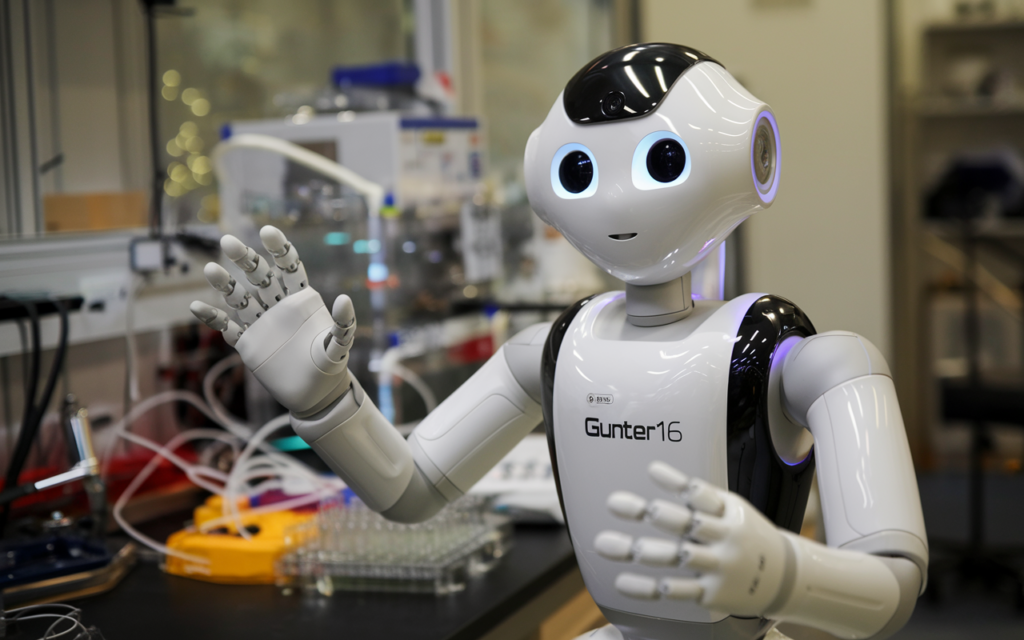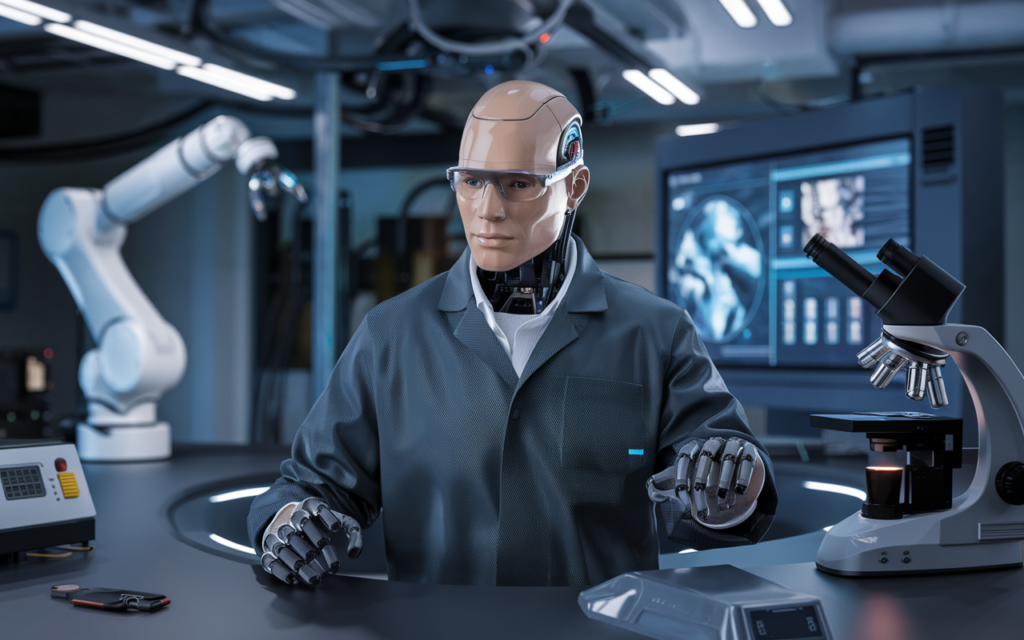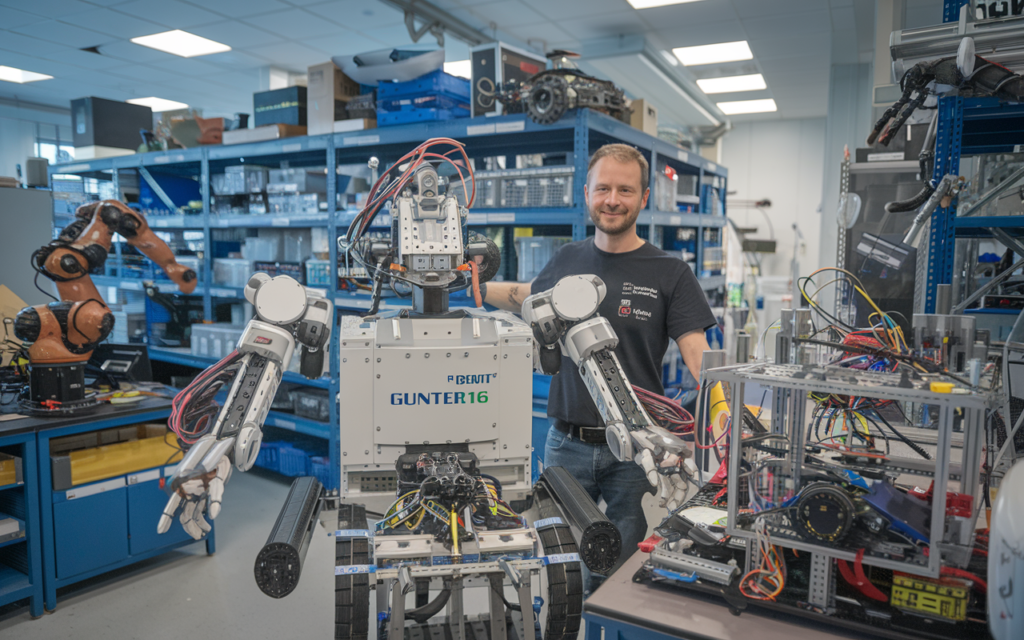Introduction
In the world of research and development, new technologies have come to light to redefine how approaches and solutions are solved. One such innovation is Gunter16 in the lab, a breakthrough system that is transforming the way scientists and researchers conduct experiments across multiple disciplines. Whether in biology, physics, chemistry, robotics, or artificial intelligence, Gunter16 in the lab has introduced a powerful combination of computational power, machine learning, and experimental design that is reshaping the landscape of modern research.
But what exactly is Gunter16 in the lab? So, how does it operate, and why is it considered the best advancement within the realm of productive studies? This article explores the origins of Gunter16 in the lab, its applications across different fields, the potential it holds for the future, and its impact on the broader scientific community.
Origins and Development of Gunter16 in the Lab
The journey of Gunter16 in the lab began with the visionary work of Dr. Gunter, a renowned scientist and engineer whose contributions to the field of computational science have had far-reaching effects. Dr. What Gunter wanted to achieve was to combine the efficiency of a computation system and the flexibility of an experiment. The Gunter16 in the lab project was born from the need for a more efficient way to simulate, analyze, and understand complex phenomena in real time.
The “16” in Gunter16 in the lab represents the version number of the system, a nod to the continuous development and refinement of the technology. This initial research endeavor quickly grew into a cross-disciplinary data acquisition system that could accommodate any style of research. Over time, Gunter16 in the lab became a central tool for researchers in a variety of domains, each adapting the system’s capabilities to meet their specific needs.
At its center, Gunter16 in the lab is not only a machine or a piece of software; it is a holistic machine that merges hardware, software, and human intellect. By combining excessive-performance computing, synthetic intelligence, and precision engineering, Gunter16 in the lab presents a comprehensive solution for tackling some of the most urgent scientific demanding situations.

How Gunter16 in the Lab Works
It is essential to look at how the device operates. Gunter16 in the lab is constructed on a foundation of current technology, along with excessive-performance computational systems and device-gaining knowledge of algorithms and robot systems. These additives work together to create an unbroken interface for undertaking experiments, analyzing outcomes, and generating new insights.
One of the key features of Gunter16 within the lab is its capacity to perform real-time simulations of complex techniques. For example, in biology, the system can simulate protein folding or cell conduct with tremendous accuracy. In chemistry, Gunter16 inside the lab can version chemical reactions at the molecular level, assisting researchers in understanding response pathways and molecular interactions.
What sets Gunter16 apart from traditional research structures in the lab is its adaptability. The platform is designed to be flexible, allowing scientists from different fields to customize it according to their precise needs. This versatility has made Gunter16 inside the lab an invaluable asset to a wide array of studies initiatives. Whether it is modeling the conduct of substances, simulating the mind’s neural networks, or supporting the development of new pills, Gunter16 inside the lab is able to assist a huge spectrum of experiments.
Applications of Gunter16 in the Lab: A Multifaceted Tool
The energy of Gunter16 within the lab lies in its versatility. Researchers across diverse disciplines have adopted the system to solve issues that could otherwise be too complex or time-eating to deal with. The packages of Gunter16 in the lab are various because of the clinical fields it serves, ranging from biology and medicinal drugs to physics and substance science.
In the world of biology, Gunter16 within the lab is revolutionizing the take a look at genetics, protein folding, and disease modeling. Scientists can use the machine to simulate the interactions between genes, proteins, and cells, providing insights into how diseases increase and the way capability treatments may work. By simulating those organic strategies, Gunter16 in the lab hastens the tempo of drug discovery, enabling researchers to test hypotheses more quickly and effectively.
One of the standout achievements of Gunter16 within the lab is its capacity to help with the design of personalized medicinal drugs. By studying substantial amounts of genetic statistics, the machine can help pick out the nice treatments for male or female sufferers primarily based on their particular genetic profiles. It can exchange the manner in which we approach healthcare, making an allowance for more focused therapies and progressed consequences for sufferers.
In physics, Gunter16 in the lab has been used to simulate quantum structures and study the conduct of debris at the subatomic level. By applying its effective computational talents, researchers can discover complex phenomena consisting of quantum entanglement, wave-particle duality, and quantum tunneling. These simulations deepen our understanding of the fundamental laws of nature and can sooner or later result in groundbreaking advances in quantum computing.
The discipline of materials and technological know-how has additionally benefited greatly from Gunter16 in the lab. The gadget’s ability to model the houses of substances on the atomic and molecular degree has brought about the discovery of new substances with more desirable energy, conductivity, and durability. These advancements are particularly essential in industries such as aerospace, energy, and electronics, wherein materials play a crucial role in overall performance and efficiency.
In robotics, Gunter16 in the lab has performed a key function in the development of autonomous structures. By simulating actual global environments and obligations, the system helps researchers lay out robots that can carry out complicated moves with precision and adaptability. From manufacturing robots to autonomous vehicles, Gunter16 inside the lab is contributing to the improvement of robots that can operate in a wide sort of environments, including those that might be dangerous or tough for human beings to get admission to.

The Collaborative Nature of Gunter16 in the Lab
A defining function of Gunter16 in the lab is its emphasis on collaboration. The machine is not just a tool for personal researchers but a platform that fosters interdisciplinary cooperation. Scientists, engineers, and technologists from numerous fields come collectively to harness the entire potential of Gunter16 within the lab. This collaborative approach has brought about faster progress and more revolutionary answers.
The open-supply nature of Gunter16 in the lab has also played a key role in its success. Researchers around the sector are capable of contributing to the machine’s improvement, percentage their findings, and build upon each different’s paintings. This open change of information has created a worldwide community of scientists who’re operating together to tackle a number of the sector’s most urgent and demanding situations.
By encouraging collaboration among disciplines, which include biology, engineering, physics, and pc science, Gunter16 inside the lab has ended up a nexus for innovation. This multidisciplinary technique allows for the cross-pollination of thoughts, leading to breakthroughs that would now not have been feasible in remoted fields of take a look at.

Ethical Considerations and Responsible Use of Gunter16 in the Lab
With top-notch energy comes top-notch obligation. As with any advanced technology, the usage of Gunter16 within the lab raises critical ethical considerations. The potential to simulate biological strategies, for instance, brings with it the potential for both high-quality and terrible consequences. While the machine can assist in developing clinical studies, it also opens up questions about privateness, consent, and the results of genetic manipulation.
A set of moral principles has guided the development of Gunter16 inside the lab. These standards emphasize transparency, duty, and the responsible use of generation. Researchers are recommended to take into account the wider societal implications of their work and to ensure that the benefits of Gunter16 within the lab are handy to all.
In addition, the collaborative nature of Gunter16 inside the lab has caused ongoing discussions about its ethical use. Researchers from numerous cultural and ethical backgrounds carry one-of-a-kind views to the desk, assisting in making certain that the generation is utilized in approaches that can be aligned with societal values and that prioritize the well-being of humanity.
Conclusion
Gunter16 in the lab is more than just a tool—it is a catalyst for change. By harnessing the power of advanced computational systems, machine learning, and interdisciplinary collaboration, Gunter16 in the lab is opening up new frontiers in scientific discovery. From biology and medicine to physics and robotics, the system is transforming the way we conduct experiments and solve problems.
As we look to the future, the possibilities for Gunter16 in the lab are limitless. With ongoing advancements in technology, collaboration, and ethical considerations, Gunter16 in the lab will continue to shape the scientific landscape for years to come. It is a testament to the power of innovation, the potential of technology, and the spirit of collaboration that drives progress in the world of science.
